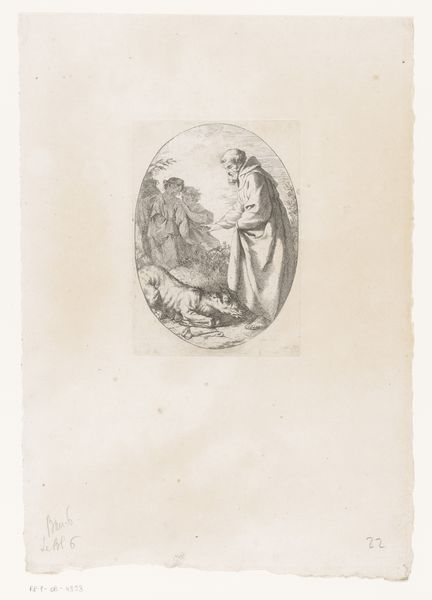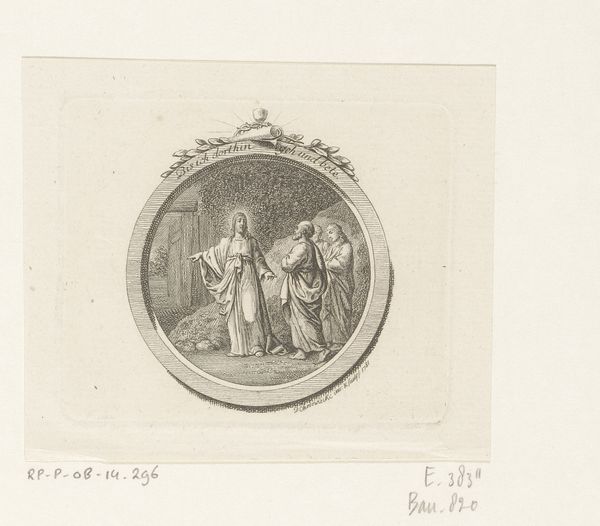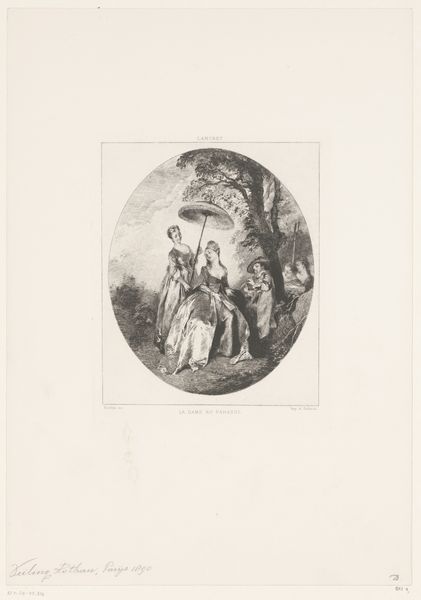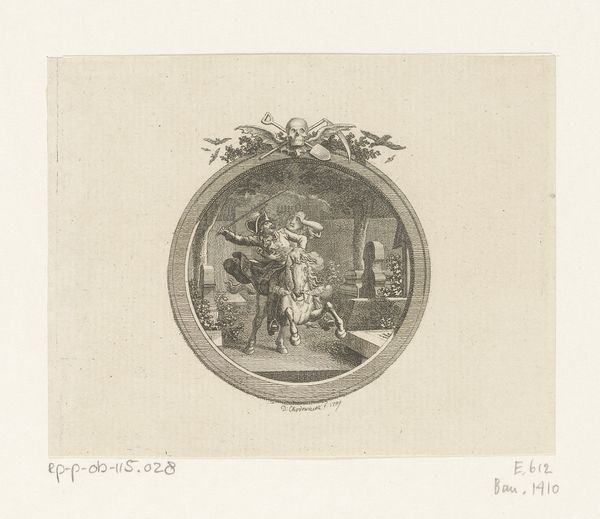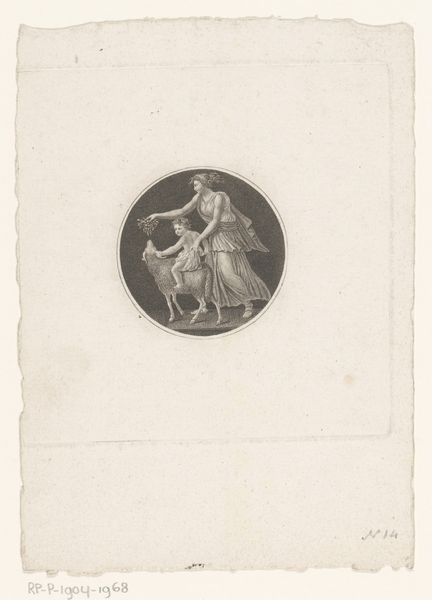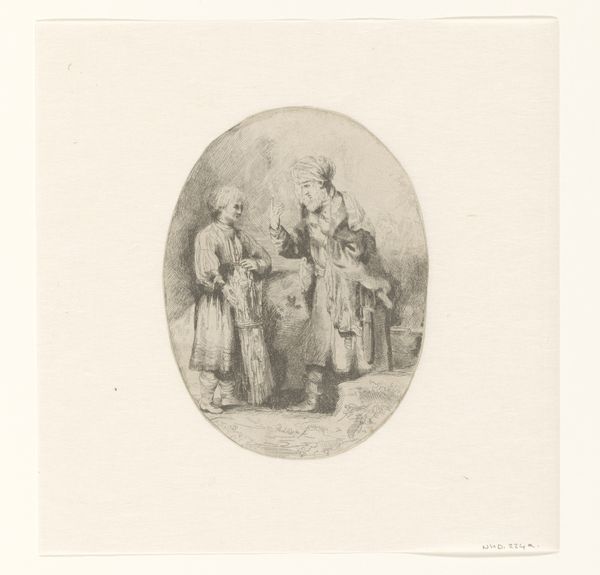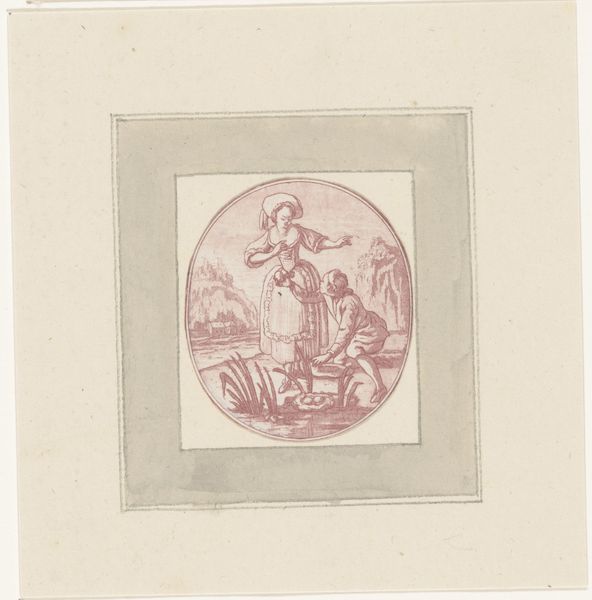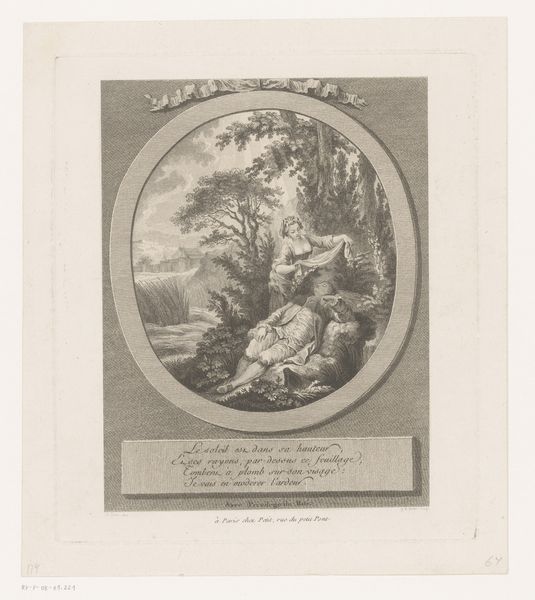
drawing, print, etching, engraving
#
drawing
#
neoclacissism
#
narrative-art
# print
#
etching
#
old engraving style
#
history-painting
#
engraving
Dimensions: height 63 mm, width 64 mm
Copyright: Rijks Museum: Open Domain
Curator: Looking at this etching, titled "Cyrus in gesprek met Daniël" ("Cyrus in Conversation with Daniel"), created by Daniel Nikolaus Chodowiecki in 1779, the neoclassical style immediately stands out. Editor: Yes, there's something so somber about it, despite what I imagine is supposed to be a moment of revelation. All those grey tones and precise lines convey a kind of… resignation? Curator: As a narrative print illustrating a biblical scene, Chodowiecki draws from a long tradition of visually interpreting scripture. Note how Daniel, on the right, gestures heavenward, bathed in divine light. The beam signifies the power dynamic at play here. Editor: It strikes me, though, that Cyrus, on the left, seems almost… resistant? His body language, though composed, hints at a conflict, or perhaps even an imposition of power that requires divine intervention to legitimize. It's as though he must accept a mandate, perhaps even reluctantly. Curator: That’s interesting. Within the visual language of the 18th century, that upwards gesture by Daniel was generally recognized as indicating the divine will. The scene recalls narratives of prophecy and validation of earthly rulers by spiritual figures. Remember, engravings like these would have disseminated ideas widely at the time. The light becomes a symbol of not only God's endorsement, but, in essence, an endorsement by the power structures that supported these visual narratives. Editor: It does make you think about the use of religion to legitimize political actions. The image hints at questions that echo across time – who interprets the divine will and whose agendas do they serve? Curator: A valid question. Though this image originates from the past, understanding its iconography invites contemplation regarding its influence and implications today. Editor: I'll leave with the thought that the tension apparent in the image is perhaps still with us, informing the debates on the relationships of governance, religious freedom, and cultural identity.
Comments
No comments
Be the first to comment and join the conversation on the ultimate creative platform.

